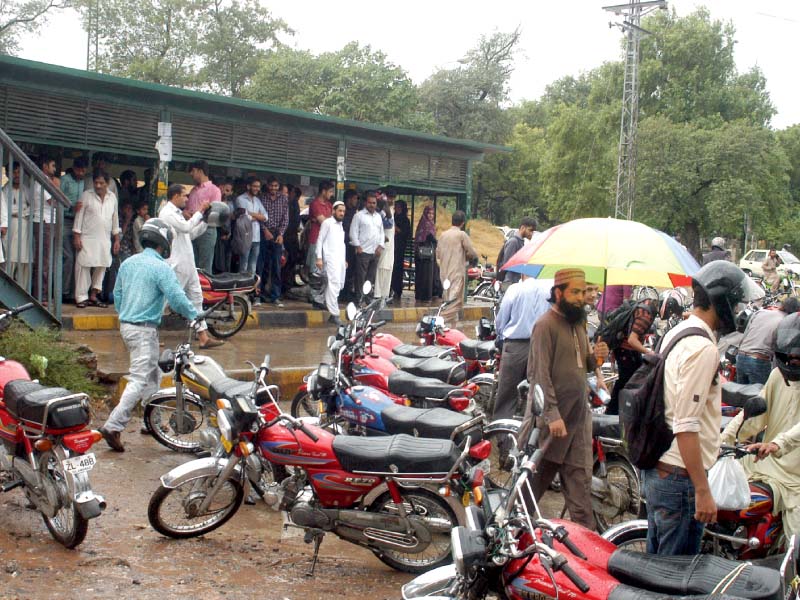
However, downpour also meant misery for some, especially motorists who had to seek shelter from the rain. Some low-lying areas of the city were also inundated.
Islamabad received moderate rain, with the heaviest showers in Saidpur where 25 mm of rain fell, the Pakistan Metrological Department (PMD) said. Rawalpindi received slightly less rain with Shamsabad receiving 22 mm, 10mm in Golra and seven millimeters in Chaklala.
Favourable forecast
The PMD has forecast more rains for Thursday along with dust and a drop in the temperatures.
A PMD official said, that drop in temperature is expected as westerly waves currently lying over north Balochistan are affecting upper parts of the country. The westerly waves are usually cold as they originate from Europe and travel from Atlantic to Mediterranean Sea.
“The temperature of westerly waves is generally low and it brings about chilly rains and drops temperatures by up to four to five degree Celsius,” PMD Director General (DG) Dr Ghulam Rasul told The Express Tribune.
“The months of October and November are considered the driest months, like May and June in Pakistan. Hence, it rains rarely in these months,” Dr Rasul said. He added that current rains will be very useful for wheat crop as farmers are busy in preparing wheat fields particularly in arid areas including Rawalpindi, Jhelum, Chakwal and parts of Khyber-Pakhtunkhwa.
Year-long trend
With the exception of Kashmir and Sindh, the country has received slightly above average rainfall during the monsoon season. According to Dr Rasul, early snowfall in mountains of Kashmir is a good omen for water availability next year.
Published in The Express Tribune, October 6th, 2016.

















COMMENTS
Comments are moderated and generally will be posted if they are on-topic and not abusive.
For more information, please see our Comments FAQ